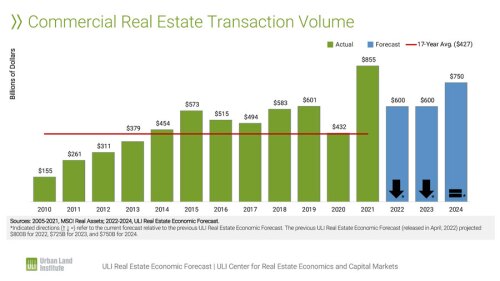The real estate industry can simultaneously combat inequality and boost property values by improving broadband access, according to a new ULI report. Broadband and Real Estate: Understanding the Opportunity, from the Institute’s Curtis Infrastructure Initiative, makes clear that high-speed internet is no longer a luxury but a necessity for participating in society and the economy.
“The COVID-19 pandemic turned the world upside down,” says Craig Lewis, chair of the Curtis Infrastructure Initiative Global Advisory Board. “Virtually overnight, the internet became our primary means of working, attending school, seeking health care, and so much more. Everybody deserves access to the opportunities the internet provides, and this report shows us how we in the real estate community can help make that happen.”
Access the report on Knowledge Finder.
The report’s key findings include the following:
- Broadband is essential: Efficient and equitable broadband is necessary for innovation and the adoption of new technology and uses. Without adequate fiber connections, emerging internet uses within the real estate industry like property technology (proptech), ride share, or smart cities are not possible.
- Universal value: Widespread broadband adds value to every sector of society, including the real estate industry, which can expect higher rates of return on projects connected to high-speed internet.
- The digital divide: Policymakers and industry must address inequities in internet access. Rural communities face a lack of accessibility and urban communities face a lack of affordability of existing services and quality, resulting in “digital redlining.”
- Role of real estate: Developers can lead by using their influence with regional planning authorities and internet service providers to both improve their return on investment and address the digital divide.
- Don’t get lost in the weeds: Real estate owners and developers do not need to understand every technical detail about connectivity to apply its value to their projects. Connectivity should not be a specialty area, but rather a key part of the development process for all projects.
- Inadequate regulation: The need for high-speed internet is expected to grow in the coming years, and government definitions of acceptable download and upload minimums have not kept up with the needs of the community.
- Understand your need: There is no one solution for addressing the digital divide. Each community will have to identify what works best for it based on its needs. This will help to develop a plan with achievable goals that leverage effective coordination and partnerships.
The report also highlights real estate and community initiatives that have expanded broadband access in different cities—and therefore increased real estate desirability and digital resource equity.
- National Landing in Northern Virginia is using access to top-tier connectivity as an incentive to draw tenants to their properties and neighborhoods. In 2020, JBG Smith, a predominant landlord in the area, bought seven blocks of Citizen Band Radio Spectrum from the federal government. The $25 million upfront cost will likely pay off by branding National Landing as the optimal place for tech-savvy entrepreneurs, universities, and technology companies that need guaranteed high-speed broadband.
- In 2019, the Sinclair Hotel in Fort Worth, Texas, implemented Power over Ethernet (PoE) technology to increase efficiency and reduce costs across the entire building. With PoE, a single ethernet cable transmits electrical power and data throughout the building. Any power or internet failures throughout the building register at one central node. That makes repairing a burnt-out lightbulb or malfunctioning television faster and easier. In addition, PoE runs on low-voltage electricity, which reduces energy expenses by 14 percent and cooling expenses by 10 percent.
- The local utility in Huntsville, Alabama, built a citywide fiber network to boost the speed and capacity of its water and electrical services. It then leased extra strands of fiber to internet provider GoogleFiber, private businesses in the area, and government entities like the public school system. GoogleFiber’s 20-year lease alone will cover the utility’s cost of building out the fiber network. The investment proved to be a win for the utility, the community institutions that gained high-speed internet access, and the entire city, which is now much more attractive to future industry.
“Communities across the country understand that broadband is the critical ingredient for increased economic opportunities and the future of real estate development,” Craig Lewis says. “Broadband has become an essential utility for every project—just like water and power. It is the backbone for all building communications and tenant expectations. But access is not enough. It must also be fast, reliable, and future proof.”



